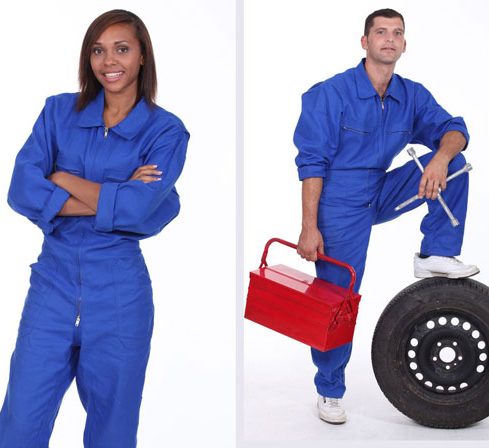
With the winter rainy season upon us, good tire treads are especially important for maintaining good traction and control. Whether or not you should rotate your tires is controversial for some people, but it’s really not a big deal. Tire rotation does make them last longer and improves handling, but it’s more important to keep an eye on uneven tread wear as an indication that something’s wrong with your vehicle.
The “rubber” on tires gradually wears away from friction on the road. Front tires wear faster due to the weight of the engine, turning, and heaver braking loads. Treads, front or rear, often wear unevenly on the innermost or outermost edges. So there’s a variety of tire rotation patterns with various combinations of front-to-back and left-to right. What’s right for each vehicle depends on various factors, including complicating issues such as front-wheel drive, 4-wheel drive, and directional tires. So we won’t go into that here.
Pros
So, should you rotate your tires at all? The consensus is yes — the more unequally they wear the more often you should rotate the tires to even out that wear. They’ll last longer, and you’ll have better traction and handling. With tread-wear evened out it’s more convenient (and usually a bit less expensive) to replace all 4 at the same time. Some people also claim improved fuel economy, reduced tire noise, and a better ride quality.
Cons
Some people say that rotating your tires simply increases wear on the otherwise good portion. Even if true, the problem is that the “balding” areas have less traction, so you’re a little bit less safe.
Well, Rotate or No?
Consumer Reports did a study based on front-wheel drive vehicles, now the most common configuration for cars. With engine weight, drive torque, and steering all combined the front tires wear out some 3 times faster than rear tires. By their calculations, over a 120,000 mile vehicle lifetime tire rotation reduces net tire costs around 10%, including the cost of rotation (https://www.consumerreports.
Others (https://community.cartalk.
Another Issue
Many types of uneven tread wear indicate a problem. If just on the center or both sides, that’s usually simple over- or under-inflation. But just on the inner or outer sides indicate something more serious, such as a worn suspension or needing a front-end alignment. Scalloping often means worn wheel bearings or that the wheel is out of balance.
Parting Thoughts
- Are the tires wearing really unevenly? Then it’s time for an important mechanical inspection.
- Many vehicle owner’s manuals recommend that you rotate the tires at intervals ranging everywhere from 3,000 to 15,000 miles (typically 6,000-8,000 miles). So that could be every oil change (very few people do this!) to 5 k, 10 k, or 15 k scheduled maintenance. It’s a toss-up whether that saves money — the point is improved safety and performance.
In brief, is tire rotation necessary? Not really, but rotating your tires is a benefit. Come see us, our mechanics will be happy to rotate your tires, but we won’t pressure you into it unless there’s a safety issue.
